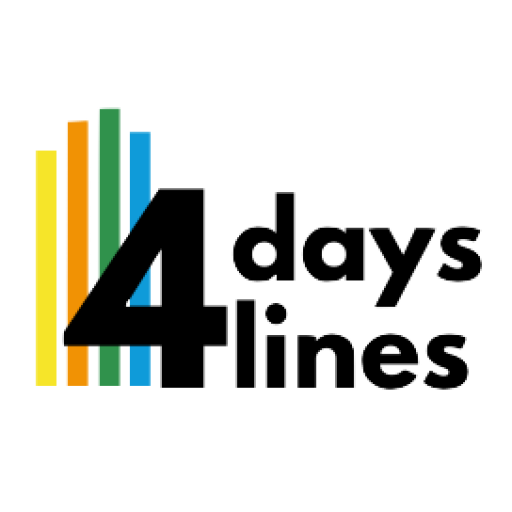About the station
It’s that time of year again, when summer ends and students and teachers of all ages go back to school all across Montréal (and the world). For this occasion, we examine the Berri-UQAM métro, an important station in the metro system named after a nearby university, the Université du Québec à Montréal (UQAM), Montréal’s second largest French-speaking university. It is also important due to its closeness to the Grande Bibliothèque, one of the most frequented public libraries in the French-speaking world and North America, which houses the Bibliothèque et Archives nationales du Québec (BAnQ). There is also an important concentration of entertainment destinations in the area, including the Quartier Latin and its many theaters and performance venues, including MTELUS, L’Olympia, Théâtre Saint-Denis, La Maison Théâtre, and Cinémathèque québécoise. Other nearby points of interest such as the Centre hospitalier de l’Université de Montréal (CHUM), Cégep du Vieux-Montréal and Berri Square all generate high traffic at the station as well.

However, Metro Berri-UQAM is not only an important station because of the many destinations around it. It is located along some of Montréal’s most trafficked streets, including Boulevard de Maisonneuve, which holds one of Montréal’s most used bike paths. The station’s connection to the Montreal Coach Terminal through the underground city means it serves as the terminus and starting point for many of Montréal’s inter-city bus passengers. Finally, the station itself is an integral crossroads of the entire metro system, as the only station which connects to three different lines: the Orange Line, the Green Line, and the start-end point for the Yellow Line.
The station is one of the few metro stations in Montreal that has recently installed elevators. However, as you can see on the station poster below, elevators only reach between the ground levels and the Green Line platforms. This leaves two major problems with the current configuration of the station that were uncovered in our accessibility audit. Note that the entrance to the Berri-UQAM station located within the BAnQ was not included in our accessibility audit as that entrance was closed at the time of the audit.

Auditing Berri-UQAM
The first issue with this layout is that there are no elevators that passengers can take to reach the yellow line. There are bidirectional escalators that connect the green platform and the upper section of the yellow platform, but 20 stair-steps need to be taken before entering or when leaving the Yellow Line trains. It is common for Montréal’s metro stations to lack elevators, but this station brings up an important thing to keep in mind about these transition years. The STM has been working hard to make more of the Montreal metro system accessible, and adding elevators to the Orange and Green platforms of Berri-UQAM is a huge step in the right direction. The contrasted lack of elevators at the Yellow platform level just emphasizes how these pieces of station infrastructure can make a difference for passengers with reduced mobility.
This is especially a concern at Metro Berri-UQAM as it serves as the start-end point of the yellow line, and it is the only way to get onto the yellow line on the actual island of Montréal. The Jean-Drapeau metro station which is the mid-point of the yellow line, and an important entertainment destination as well, does have elevators, another noted contrast due to recent changes made by the STM which also highlights the lack of planning of the original station planners. The other end-point of the yellow-line, Longueil-Université-de-Sherbrooke also does not have any elevators. In other words, even though one third of its stations are fully equipped to accommodate passengers with reduced mobility, the entire Yellow Line is off-limits to passengers who rely on elevators to move between floors. When reflecting on these situations, it is important to ask how these decisions are being made, and how is progress evaluated as new elevators are rolled out. While installing elevators at Parc Jean-Drapeau is a step forward, that step is not realized until the actual station can be accessed. This is why accessibility, especially in public transportation, must also be measured at the system-wide scale.
The second major problem is that from the ground level, a minimum of three different elevators need to be taken in order to reach the Green Line. Even to reach the Orange Line platform (or to reach the ground from that platform), a passenger needing to use an elevator must board an elevator, go up or down one floor, then go to a different elevator that takes them up to or down from the ground level. This is an inconvenient solution to a layout designed without considering the needs of everyone. We have emphasized at 4 Days 4 Lines the importance of not only the ability to access the transit system and complete a journey using that system, but also for both the access and completion being done smoothly and seamlessly. Unfortunately, asking passengers with reduced mobility to switch between multiple different elevators is neither smooth nor seamless.

Reflection
We ask that, as you ride the metro, whether it is in Montreal or in your own city, you join us in reflecting on your experience, its seamlessness, and its smoothness. Even more importantly, when riding, think about how your experience would change if you were disabled or had reduced mobility: would your trip still be smooth and seamless?

